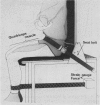Abstract
The contractile properties of a large proximal muscle (quadriceps femoris) and a small distal muscle (adductor pollicis) have been measured in normal children and children with neuromuscular disorders. The method of stimulating the quadriceps femoris to contract, previously evaluated in adults, was found to be acceptable to children. In normal children a number of indices of muscle function were found to be similar to those in adults. A small study of the function of the adductor pollicis using supramaximal stimulation of the ulnar nerve was carried out in boys with Duchenne dystrophy. Decreased contractile force and prolonged relaxation times from a tetanic stimulation were noted in both the proximal and distal muscles of the boys with Duchenne dystrophy.
Full text
PDF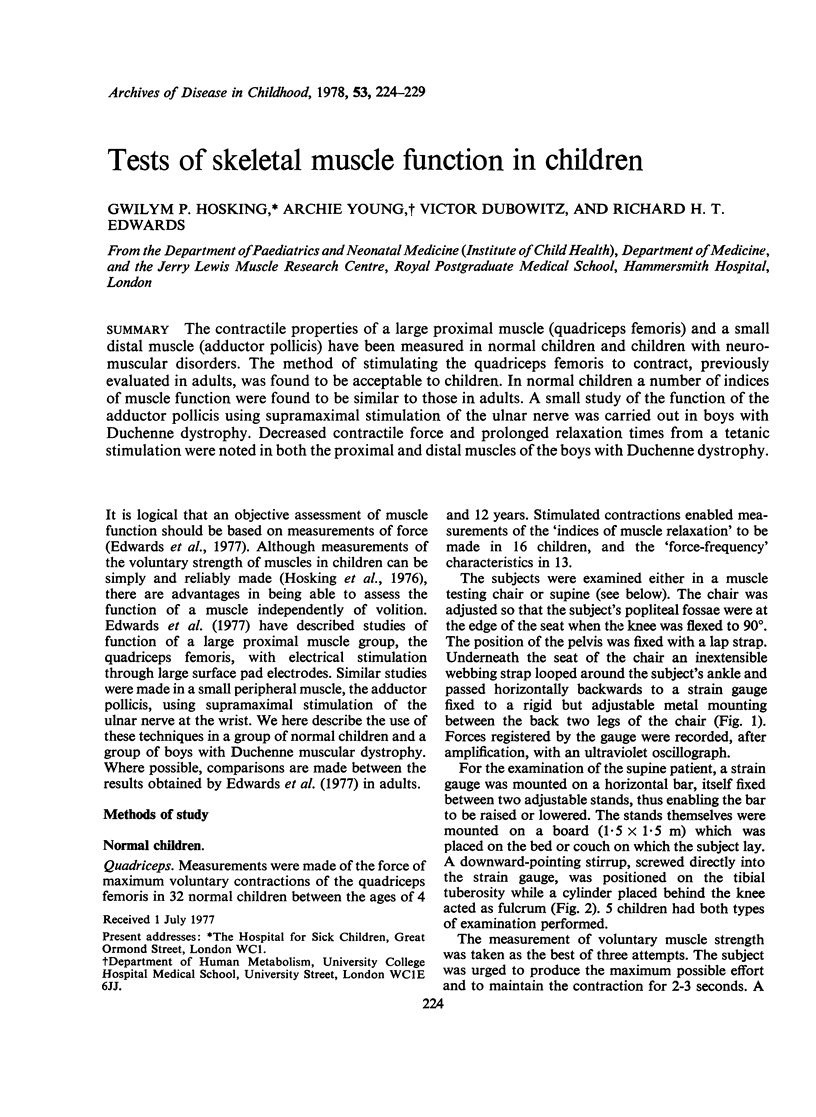
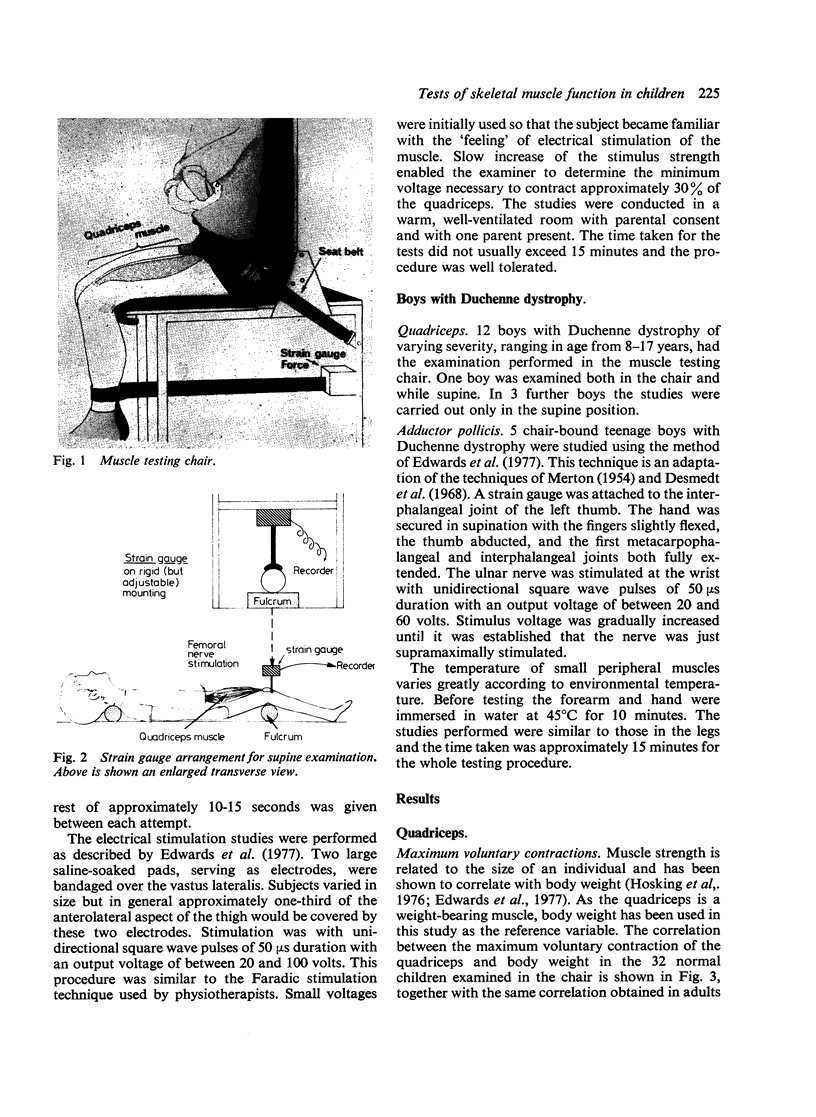
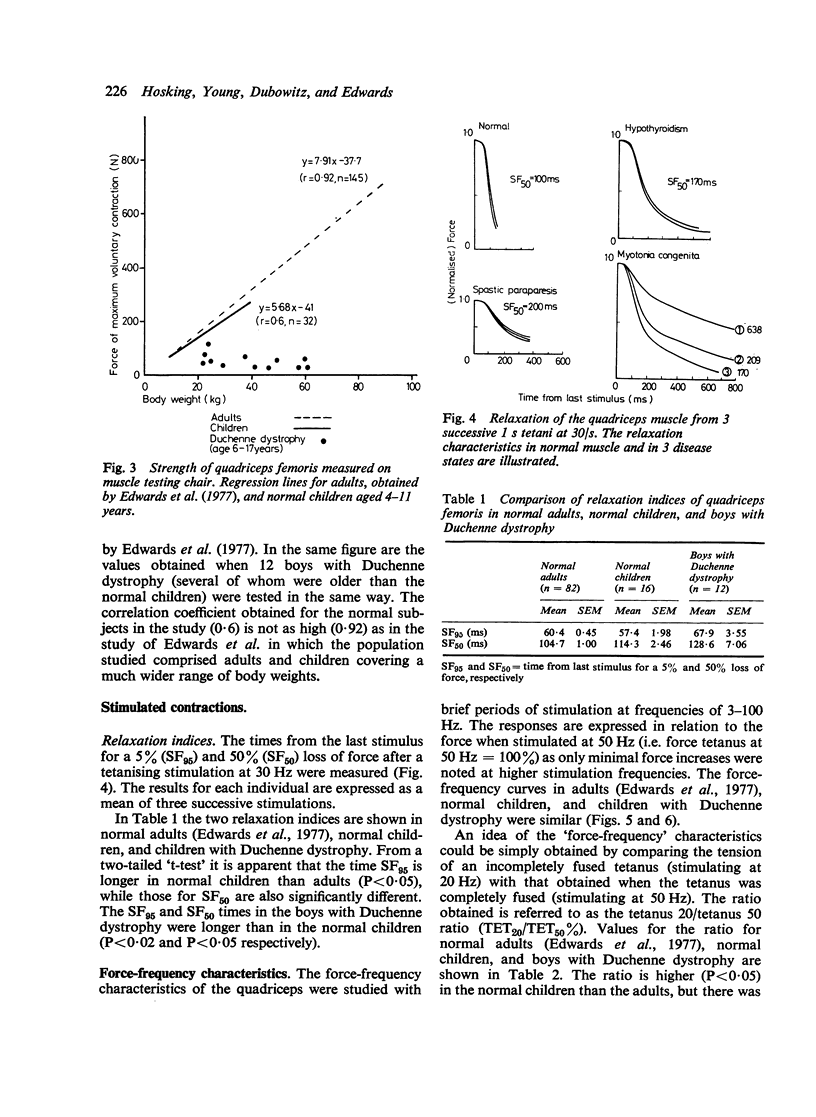
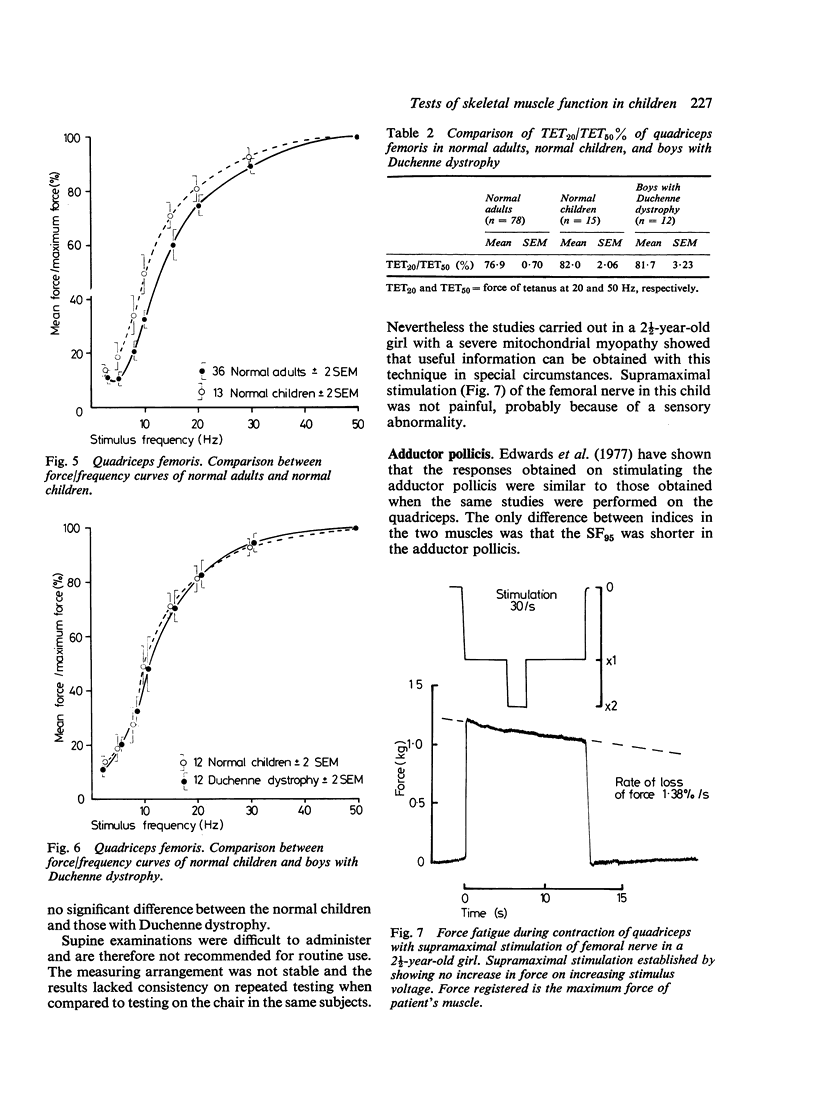

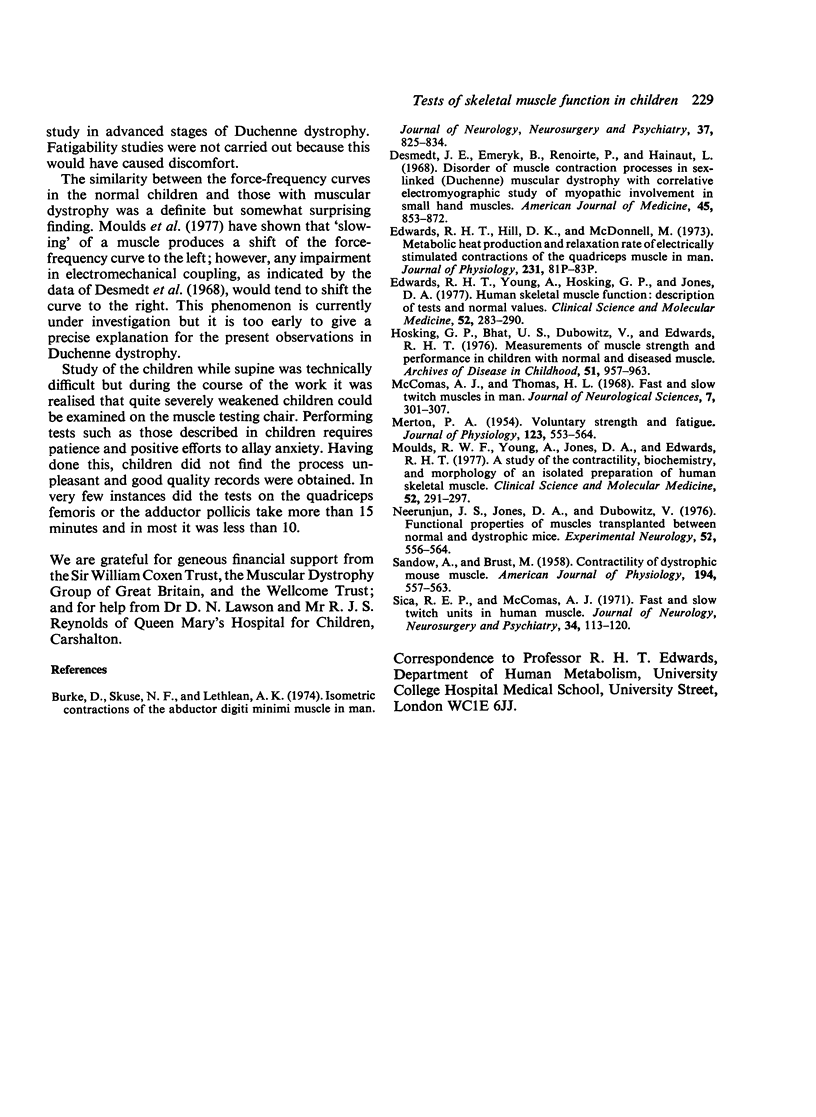
Images in this article
Selected References
These references are in PubMed. This may not be the complete list of references from this article.
- Burke D., Skuse N. F., Lethlean A. K. Isometric contraction of the abductor digiti minimi muscle in man. J Neurol Neurosurg Psychiatry. 1974 Jul;37(7):825–834. doi: 10.1136/jnnp.37.7.825. [DOI] [PMC free article] [PubMed] [Google Scholar]
- Desmedt J. E., Emeryk B. Disorder of muscle contraction processes in sex-linked (Duchenne) muscular dystrophy, with correlative electromyographic study of myopathic involvement in small hand muscles. Am J Med. 1968 Dec;45(6):853–872. doi: 10.1016/0002-9343(68)90184-8. [DOI] [PubMed] [Google Scholar]
- Edwards R. H., Hill D. K., McDonnell M. Metabolic heat production and relaxation rate of electrically stimulated contractions of the quadriceps muscle in man. J Physiol. 1973 Jun;231(2):81P–83P. [PubMed] [Google Scholar]
- Edwards R. H., Young A., Hosking G. P., Jones D. A. Human skeletal muscle function: description of tests and normal values. Clin Sci Mol Med. 1977 Mar;52(3):283–290. doi: 10.1042/cs0520283. [DOI] [PubMed] [Google Scholar]
- Hosking J. P., Bhat U. S., Dubowitz V., Edwards R. H. Measurements of muscle strength and performance in children with normal and diseased muscle. Arch Dis Child. 1976 Dec;51(12):957–963. doi: 10.1136/adc.51.12.957. [DOI] [PMC free article] [PubMed] [Google Scholar]
- MERTON P. A. Voluntary strength and fatigue. J Physiol. 1954 Mar 29;123(3):553–564. doi: 10.1113/jphysiol.1954.sp005070. [DOI] [PMC free article] [PubMed] [Google Scholar]
- McComas A. J., Thomas H. C. Fast and slow twitch muscles in man. J Neurol Sci. 1968 Sep-Oct;7(2):301–307. doi: 10.1016/0022-510x(68)90150-0. [DOI] [PubMed] [Google Scholar]
- Moulds R. F., Young A., Jones D. A., Edwards R. H. A study of the contractility, biochemistry and morphology of an isolated preparation of human skeletal muscle. Clin Sci Mol Med. 1977 Mar;52(3):291–297. doi: 10.1042/cs0520291. [DOI] [PubMed] [Google Scholar]
- Neerunjun J. S., Jones D. A., Dubowitz V. Functional properties of muscle transplanted between normal and dystrophic mice. Exp Neurol. 1976 Sep;52(3):556–564. doi: 10.1016/0014-4886(76)90226-0. [DOI] [PubMed] [Google Scholar]
- SANDOW A., BRUST M. Contractility of dystrophic mouse muscle. Am J Physiol. 1958 Sep;194(3):557–563. doi: 10.1152/ajplegacy.1958.194.3.557. [DOI] [PubMed] [Google Scholar]
- Sica R. E., McComas A. J. Fast and slow twitch units in a human muscle. J Neurol Neurosurg Psychiatry. 1971 Apr;34(2):113–120. doi: 10.1136/jnnp.34.2.113. [DOI] [PMC free article] [PubMed] [Google Scholar]



